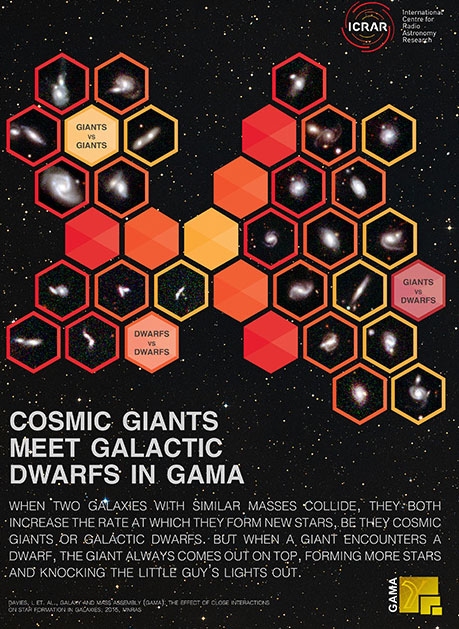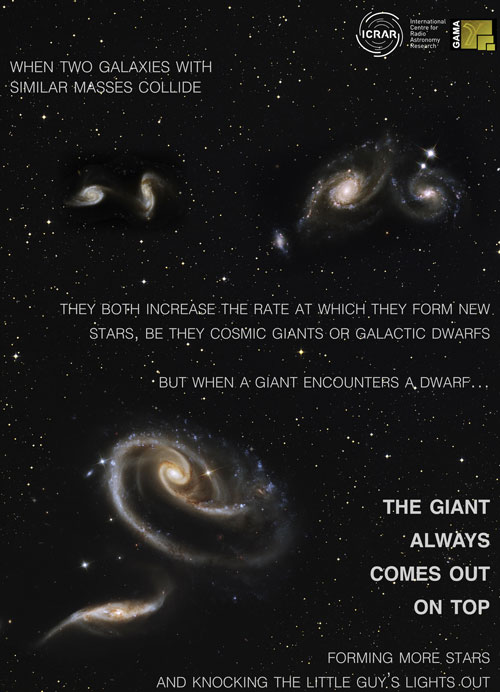| Jul 13, 2015 |
What happens when cosmic giants meet galactic dwarfs?
|
|
(Nanowerk News) When two different sized galaxies smash together, the larger galaxy stops the smaller one making new stars, according to a study ("Galaxy and Mass Assembly (GAMA): the effect of close interactions on star formation in galaxies") of more than 20,000 merging galaxies.
|
|
The research also found that when two galaxies of the same size collide, both galaxies produce stars at a much faster rate.
|
 |
|
Astrophysicist Luke Davies, from The University of Western Australia node of the International Centre for Radio Astronomy Research (ICRAR), says our nearest major galactic neighbour, Andromeda, is hurtling on a collision course with the Milky Way at about 400,000 kilometres per hour.
|
|
"Don't panic yet, the two won't smash into each other for another four billion years or so," he says.
|
|
"But investigating such cosmic collisions lets us better understand how galaxies grow and evolve."
|
|
Previously, astronomers thought that when two galaxies smash into each other their gas clouds--where stars are born--get churned up and seed the birth of new stars much faster than if they remained separate.
|
|
However Dr Davies' research, using the Galaxy and Mass Assembly (GAMA) survey observed using the Anglo-Australian Telescope in regional New South Wales, suggests this idea is too simplistic.
|
|
He says whether a galaxy forms stars more rapidly in a collision, or forms any new stars at all, depends on if it is the big guy or the little guy in this galactic car crash.
|
|
"When two galaxies of similar mass collide, they both increase their stellar birth rate," Dr Davies says.
|
|
"However when one galaxy significantly outweighs the other, we have found that star formation rates are affected for both, just in different ways.
|
|
"The more massive galaxy begins rapidly forming new stars, whereas the smaller galaxy suddenly struggles to make any at all.
|
|
"This might be because the bigger galaxy strips away its smaller companion's gas, leaving it without star-forming fuel or because it stops the smaller galaxy obtaining the new gas required to form more stars."
|
 |
|
So what will happen in four billion years to the Milky Way and Andromeda?
|
|
Dr Davies says the pair are like "cosmic tanks"--both relatively large and with similar mass.
|
|
"As they get closer together they will begin to affect each other's star formation, and will continue to do so until they eventually merge to become a new galaxy, which some call 'Milkdromeda'," he says.
|


